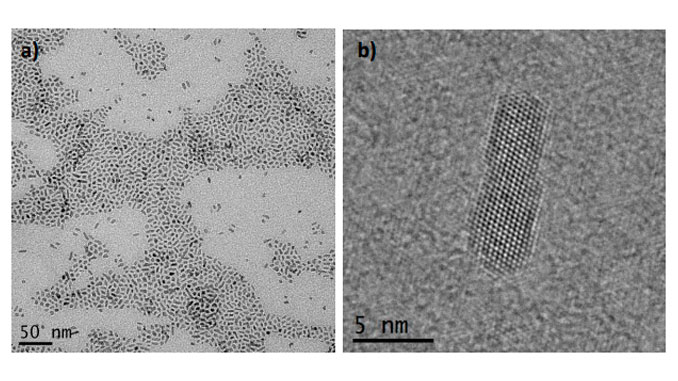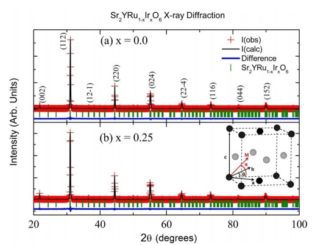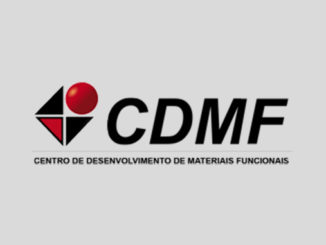
Writers: Cleocir José Dalmaschio; Edney Geraldo da Silveira Firmiano; Antonio Narcisio Pinheiro; Diego Guedes Sobrinho; André Farias de Moura; and Edson Roberto Leite
Abstract: Close-packed arrays of ZrO2nanocrystals (NCs) have been self-assembled from a colloidal solution in a withdrawal dip coating process. A benzyl alcohol route was used to obtain NCs of narrowly controlled size, and then the capping layer was replaced by oleate using solvothermal treatment. The oleate solubility was explored in chloroform, hexane and toluene to prepare thin films of NCs using a dip coating process. From TEM images, the final structures show that increasing the solvent polarity improved self-assembly to prepare mono- and multi-layer superlattices, during solvent evaporation in a short time. The entangled organic chain in the NC surface offsets the limitations of the faceted NCs, improving the assembly quality, allowing the NC assembly to approach the formation of a hard sphere model, resulting in a FCC close-packed structure. Furthermore, the low interaction of chloroform with the capping layer reduces the shrinkage effect during the solvent evaporation preserving the array in the final self-assembled structure. Molecular dynamics simulations with soft potentials supported the conclusion that hexane interacts with the organic capping ligand, increasing the apparent radius of each NC and stabilizing the colloidal suspension, whereas chloroform is partially removed from the capping layer during the aggregation process, forming an array of nanoparticles.
See PDF(ABOUT SUPPLEMENTARY INFORMATION): SUPPLEMENTARY INFORMATION
DOI: 10.1039/c3nr00883e




